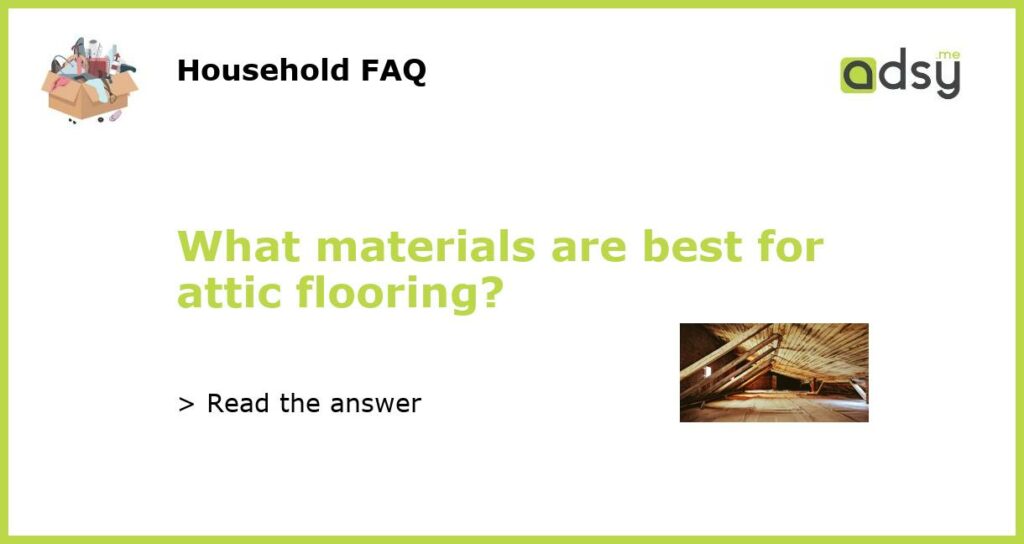The Benefits of Attic Flooring
Attic flooring provides several benefits, including additional storage space and increased energy efficiency. With the right materials, you can create a sturdy and safe floor in your attic that can support the weight of storage items or even be utilized as an extra living space. However, not all materials are suitable for attic flooring. Let’s explore the best materials to use for this purpose.
Plywood
Plywood is one of the most popular choices for attic flooring due to its strength and durability. It can handle heavy loads without flexing or warping, making it ideal for storing items or creating a usable space. Plywood comes in different thicknesses, so choose a thicker option for added stability.
When installing plywood as attic flooring, ensure that the subfloor is in good condition and free from any moisture or potential leaks. It is essential to properly seal the plywood to prevent moisture from entering and causing damage. Use a moisture barrier or apply a sealant to protect the plywood from excessive humidity in the attic.
OSB (Oriented Strand Board)
OSB is another cost-effective and durable option for attic flooring. It is made from wood strands glued together under high pressure, creating a strong and stable panel. OSB has a smooth surface, making it easy to install and move items around without snagging or damaging them.
Similar to plywood, OSB should be properly sealed to prevent moisture and humidity from causing damage. Apply a waterproof sealant or use a moisture barrier to protect the OSB from potential leaks or condensation in the attic.
Advantages of Vinyl Flooring
While plywood and OSB are common choices for attic flooring, vinyl flooring offers unique advantages. Vinyl is a synthetic material that is resistant to moisture, making it ideal for areas prone to humidity or occasional leaks. It is also durable, easy to clean, and provides a smooth surface for walking or storing items.
Vinyl flooring comes in various styles, including planks or tiles, allowing you to customize the appearance of your attic floor. It is relatively easy to install, and some vinyl options offer adhesive backing for a simple peel-and-stick application.
Factors to Consider
When choosing the best materials for attic flooring, it is important to consider a few factors:
- Weight Capacity: Ensure that the materials you choose can support the intended load. Consult a professional or refer to manufacturer guidelines for weight limits.
- Moisture Resistance: Attics can be prone to moisture issues, so selecting materials that are resistant to water damage is crucial to prevent warping, mold growth, and other issues.
- Installation: Some materials, like vinyl, are easier to install than others. Consider your DIY skills or budget for professional installation when deciding on attic flooring materials.
- Budget: Different materials come with varying costs. Consider your budget and the overall value you want to achieve when making your selection.
By considering these factors and choosing the right materials, you can create a functional and safe attic flooring that meets your needs. Plywood, OSB, and vinyl flooring are among the top choices for their strength, durability, and moisture resistance. With proper installation and maintenance, your attic flooring can provide valuable storage space or even become an extra living area.






